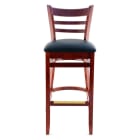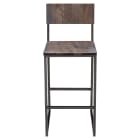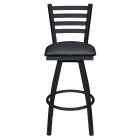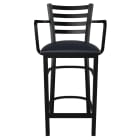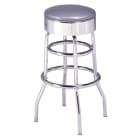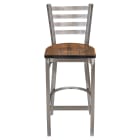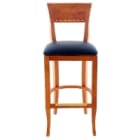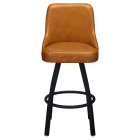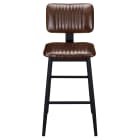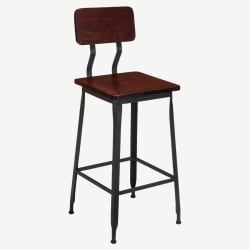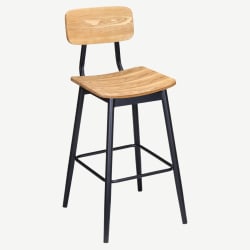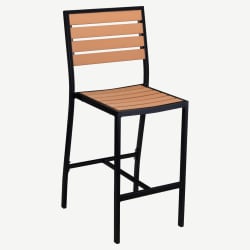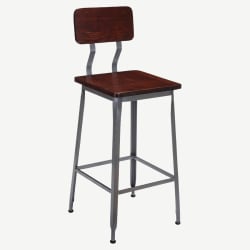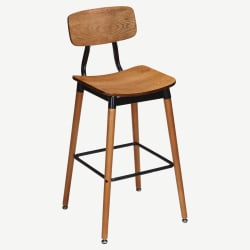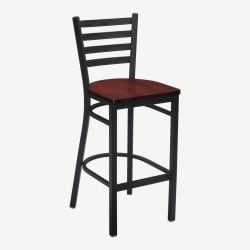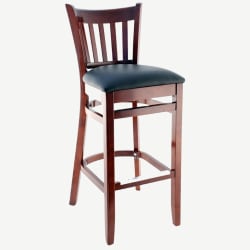Restaurant Bar Stools
Popular Products
Commercial Bar Stools for Restaurants
From chique cocktail lounges to hole-in-the-wall local establishments, whether or not everybody knows your name, there’s one thing all bars have in common: somewhere to sit. Stools and chairs offer comfortable positions right at the counter, and whether customers come to bump elbows and meet new friends or simply to unwind after a long day, having a static place to do it is important to both the feel and function of any commercial restaurant or bar.
Bar Stool or Chair
Believe it or not, there’s actually a difference, though it mainly boils down to size and dimensions: counter stools typically measure from 24 to 27 inches tall, while bar stools average between 28 to 30 inches tall. Anything more is an extra tall stool; any shorter, and you’ve typically entered dining chair territory. It’s important to allow space between the edge of the seat, the height of the bar overhang, and the space between where the customer’s feet will sit and the wall of the bar. A good rule of thumb is to allow approximately 10 inches between the top of the seat and the lip of the counter to give space for the knees and thighs.
On the other hand, most consumer driven bars and nightclubs are furnished with metal bar stools. They hold up better to drinks being spilled on them and tend to have a more modern design, perfect for contemporary and urban style venues. The use of metal for bar stools came from the demand for stronger and sturdier seating. Resistance to discoloration and undue wear are what make commercial metal bar stools very popular. They also have many other advantages including lower price when compared to their wood counterparts.
Which to Pick?
The choice of which to implement and what style to go with are of crucial importance to any owners planning the furnishing or updating of an existing space. To get right to it, there are a few factors to consider: size of the space, consistent design, and material. Establishments with small interiors will benefit from smaller, backless, less substantial choices, which will also have the effect of offering a greater sense of openness or accessibility by customers.
If comfort is a greater concern than space, then bar stools that offer back support and armrests become the better option. Overall, the seat should match the design language of the rest of the establishment’s furnishings and decor; it doesn’t have to be 100% similar, but adjacent or complementary styles are better. Alternatively, ensuring the decor styles suggest similarity without directly coinciding allows patrons to visually differentiate between the bar and the dining room and provides a layered look to each individual area.
Style vs Budget
Solid wood frames with backs and/or armrests offer a traditional style along with comfort for guests, but can be on the more expensive side. Backless barstools and bolt-down or swivel barstools offer a classic and simplistic look without taking up much space. Metal frames tend to be cheaper and more durable, and with the abundance of finishing options, can be adapted to the style of any establishment: chrome is sleek, elegant, and modern, while wrought iron is decorative, robust, and rustic. Wood seats fit with any material, while padded and plush vinyl seats offer comfort and help save on cost.
With all this in mind, picking the right bar stool becomes a matter of checking off criteria: does the establishment offer a calm and sophisticated atmosphere with a lower-height bar? An upholstered counter stool with a wood frame might be the way to go. What about a family bar and grill with minimal room to spare? Backless metal bar stools make for a classic feel and smaller presence with good durability. Whatever direction an owner might choose to go, these basics should help make the process of furnishing simpler, more affordable, and style-intuitive.

